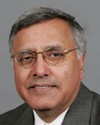Thank you.
Mr. Chair, members of the committee, this committee is of course reviewing the role of Canadian servicemen and women in peacekeeping operations post-2011. I have a couple of ideas that I would like to propose, as well as a few suggestions to make not only about how peacekeeping operations have evolved, but also about what Canada could in fact take on, whether it be in Africa or in other theatres of operations.
However, to begin with I think that it is important to make a number of distinctions—Douglas Bland stressed this point in his brief. Peacekeeping operations are only a component of today's broader peace operations which include conflict prevention, peace enforcement, peace-making and peacebuilding. Along this spectrum, there is also traditional peacekeeping, which is what Canadians have been used to for the past 50 or so years.
These peace operations, Mr. Chair, have got considerably bigger, to the extent that they are unlike anything we have seen over the past 65 years. Twenty years ago there were 12 peacekeeping operations globally; 11 of which were led by the United Nations, and one other by a multi-national force based out of Sinai in between Egypt and Israel. Now, as I described in my written brief, nowadays peace operations run the whole gamut including 40 peacekeeping, peace enforcement, and peacebuilding missions spread out over 5 continents, including 200,000 peacekeepers, 6 international and regional organizations, and 2 coalitions, which currently play a role in these missions, billions of dollars for the reconstruction of fragile states and to provide a fresh start for the people of 23 countries located primarily in Africa, with a success rate commended by most researchers and research centres, including RAND Corporation and the Human Security Report.
The reason why today's peace operations have become so popular among decision-makers as conflict management and resolution tools is that they have been fine-tuned over the years and produce results. There are a number of activities included under the mandates of today's peace operations including confidence building, arresting war criminals, creating or strengthening state structures, disarmament and mine clearance, reintegrating child soldiers, protecting civilians including women and children, reforming the security sector, etc.
In fact, the success of peace operations is increasingly on the radar screen, taken into account even by a number of western countries that had more or less dismissed them in the 1990s. A number of concrete examples attest to this growing confidence. In 2006, seven European nations, including big countries like France, Germany, Italy and Spain, came to support the mission in Lebanon, and on their conditions, I should point out Mr. Chair, which is important for Canada on a go-forward basis. In September 2009, during an unprecedented meeting in the history of the United Nations, the U.S. President spoke directly to those countries that provide the UN with contingents and promised them that the United States would remain committed. And then, in February 2010, the new British Defence Green Book stressed that "the exceptional role that the UN plays in terms of international architecture, peacebuilding, and security and governance, is more important than ever".
So for the past five years, there have been many western countries that have begun to consider a return to the peace operations model, or have actually taken the leap and are taking part in UN, NATO, European Union, and OSCE-led operations. They are supporting peace operations conducted by the African Union and other regional organizations.
I will speed up. As you know—and Douglas pointed this out in his testimony—the 1990s were tough in terms of peacekeeping operations. There were mistakes and disasters, and we often forget the success stories. I was a journalist for 20 years. And as you are aware, honourable members, journalists write bad news stories because people don't want to read about good news stories. There is good news to report as far as peacekeeping operations are concerned. Of the 120 peacekeeping missions led by various international organizations over a 20-year period, the overwhelming majority were a success. We therefore need to remind our political decision-makers, the public, and researchers, of this.
What does that mean for Canada? I think that if you were to look at the way the Europeans negotiated their return to the UNIFIL in Lebanon in 2006, you would realize that a number of criteria were set enabling the French, Italians, Germans, and others, to deploy their forces safely. Of course, a peace operation will never be a war operation. I understand the distinction that my colleague is making and I also understand the definition of war. However, peace operations follow the rules set out by members of international organizations, in agreement with the various parties. Let me come back to my core idea, and that is that most of these peace operations actually work.
And so, given the reforms carried out at the United Nations in the past 10 to 15 years, and more specifically, in light of what we call robust peacekeeping, which permits France, Germany, Italy, and Spain, to deploy tanks, aircraft, helicopters, and ships to Lebanon to carry out the UNIFIL mandate, I do believe that this is a new era for peace operations. They are not like Afghanistan, Iraq, Rwanda, and the old peacekeeping missions.
In conclusion, Mr. Chair—and I will respond to questions that you may have—I believe that Canada has acquired an exceptional reputation and experience in Afghanistan. Now, it is true that we have lost 140 soldiers. And yet, we should be very proud of what Canadians have accomplished in Afghanistan, for our security, for the security of NATO, and for the world. On the strength of the nearly 10 years of combat experience, relationships with the people, and of the interoperability with our allies on the ground, I do believe that now Canadian soldiers are well equipped to participate in peace operations, whether it be in the Congo or elsewhere in the world.
Thank you, Mr. Chair.



